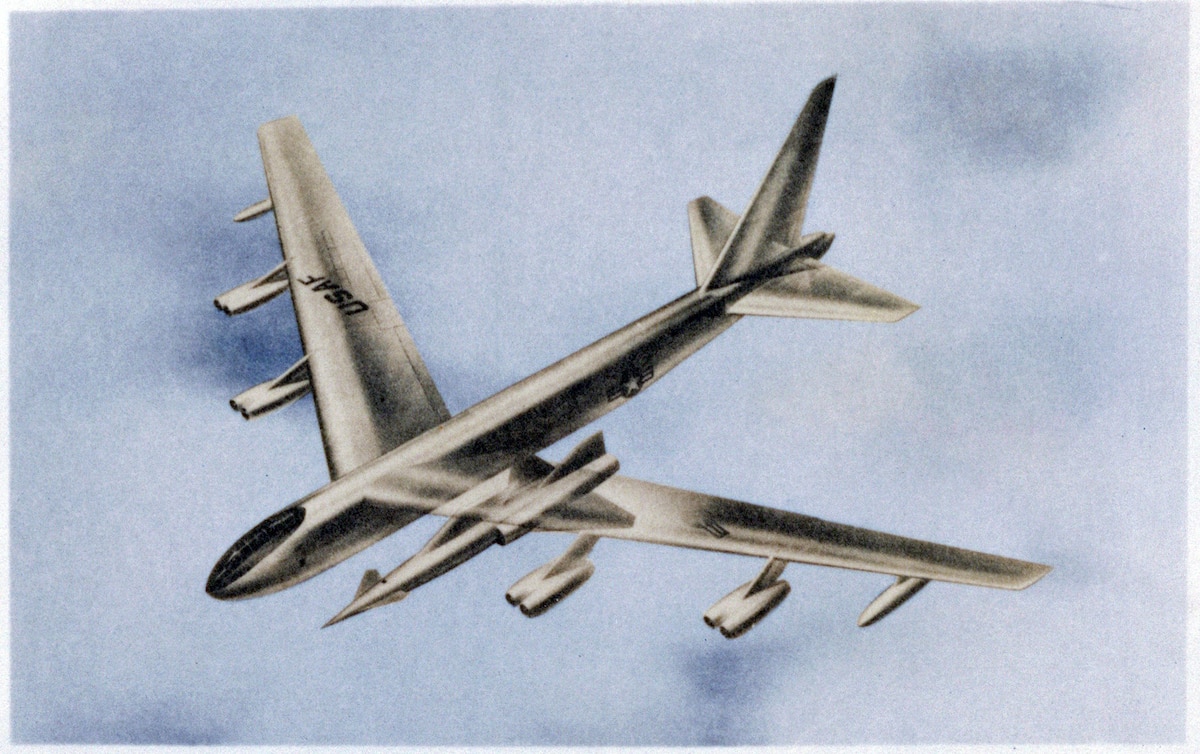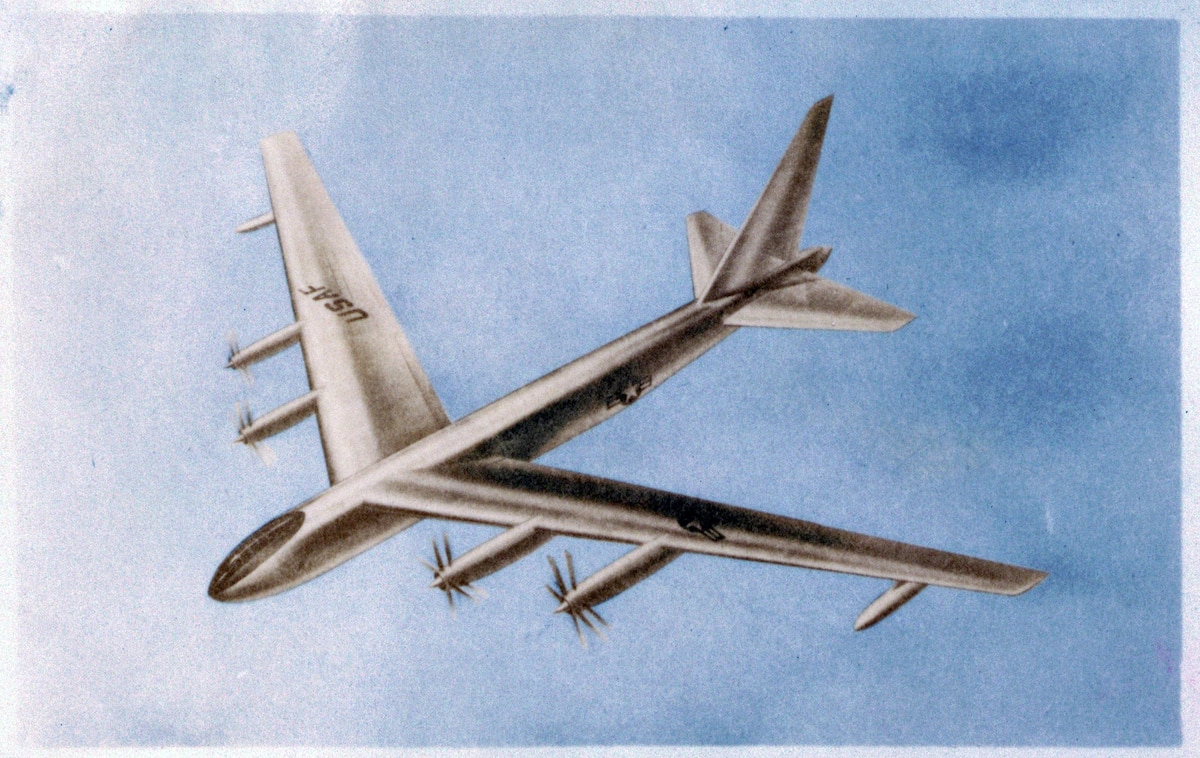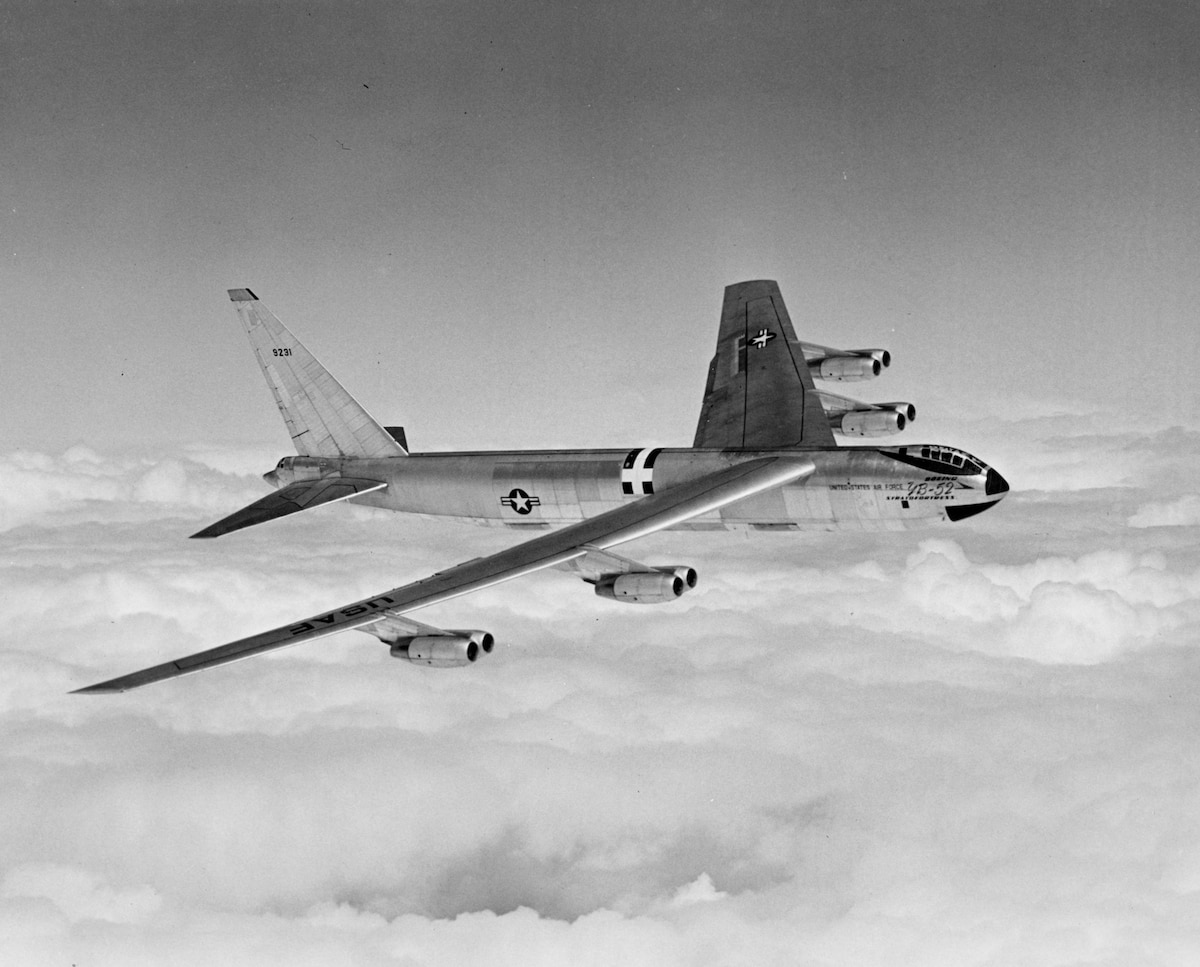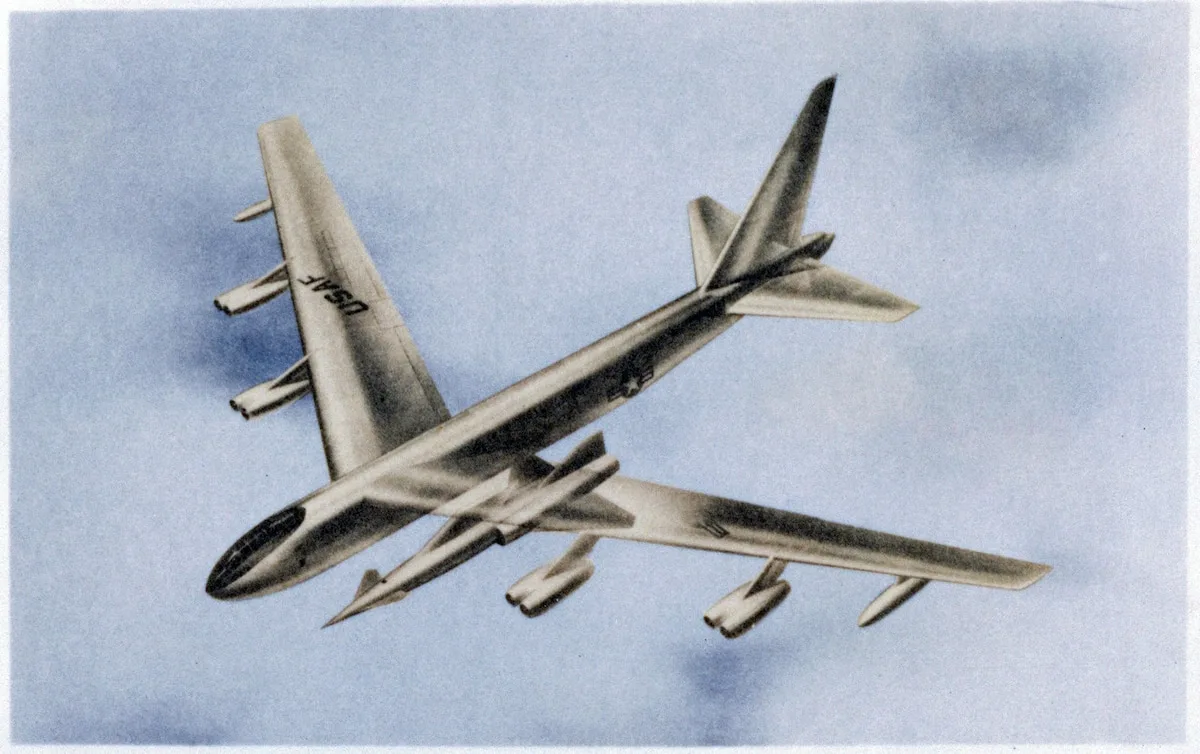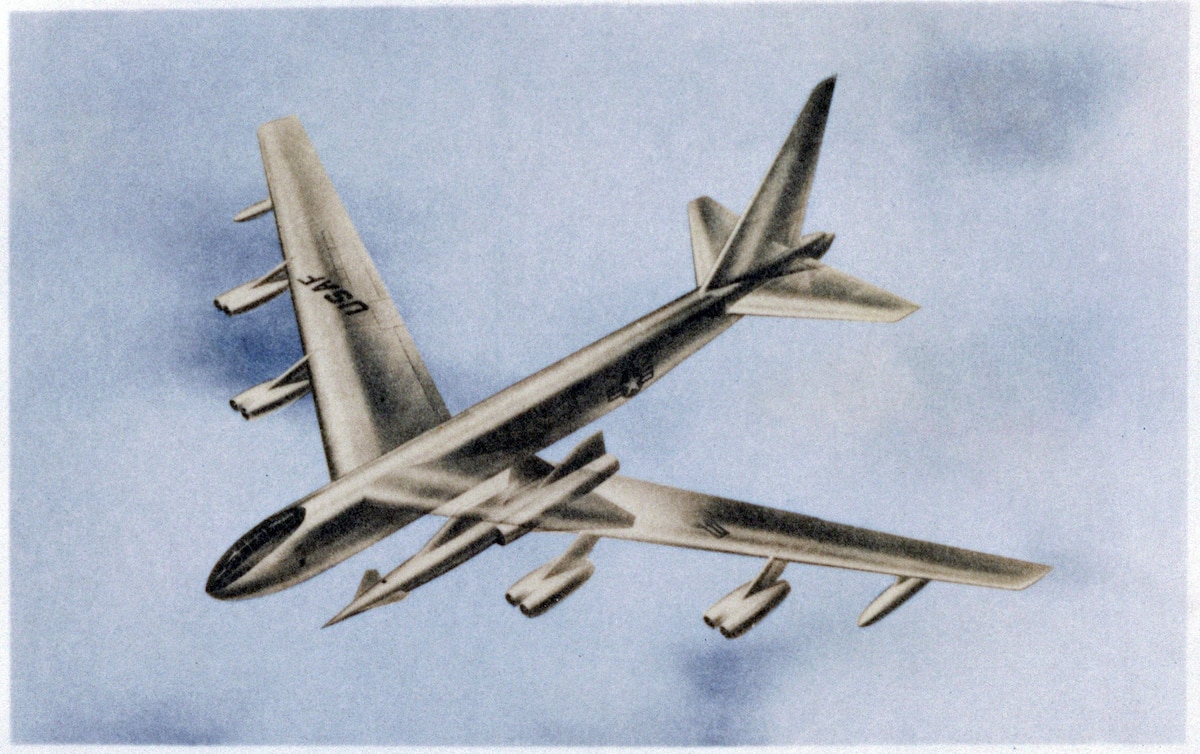Tony R. Landis
The Boeing B-52 Stratofortress has been the backbone of U.S. Air Force Strategic deterrence since it became operational in 1955. Keeping this old workhorse up to date with the latest technology is a priority for the Air Force and Boeing. The contractor put every variant of the B-52 through an extensive loads and fatigue life program before they entered service, as they expected the aircraft to fly well into the 1970’s, one report stated.
In 1950, two years before the first XB-52 prototype took to the air, Boeing was already looking into the future, proposing various modifications to improve the performance of their new bomber design. These early modifications are based off Boeing Model 464-100, known to the Air Force as the YB-52. In addition to the airframe modifications, Boeing investigated the use of the latest turbojet and turboprop engine designs.
Full story: History in Two
